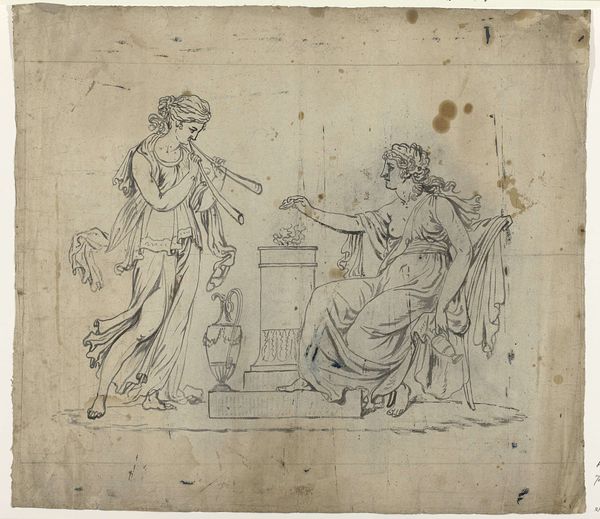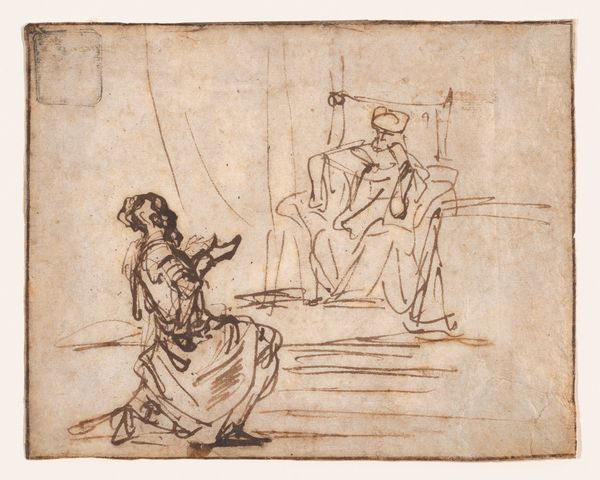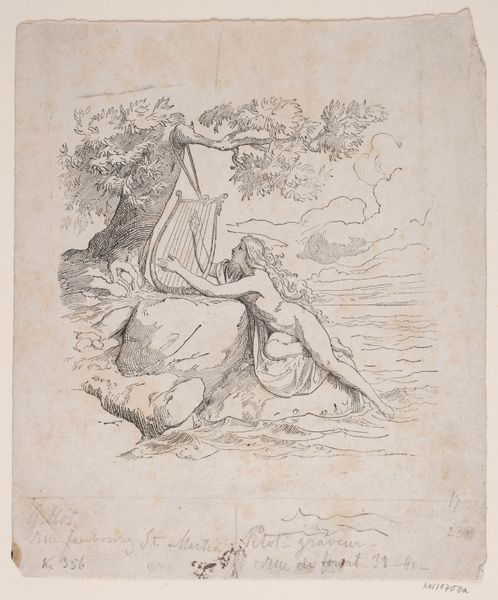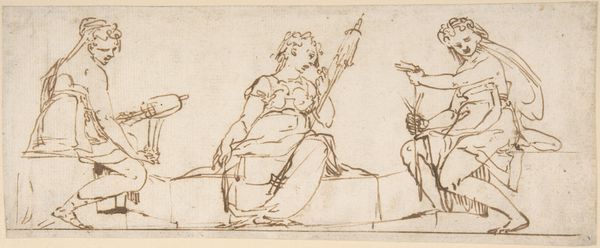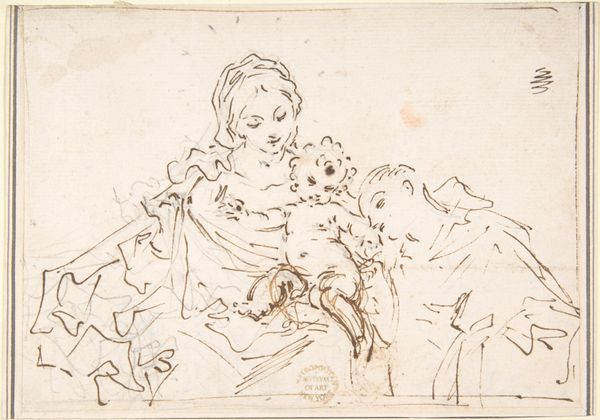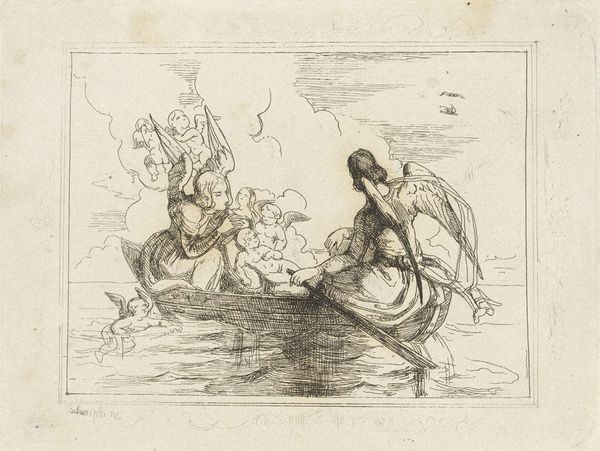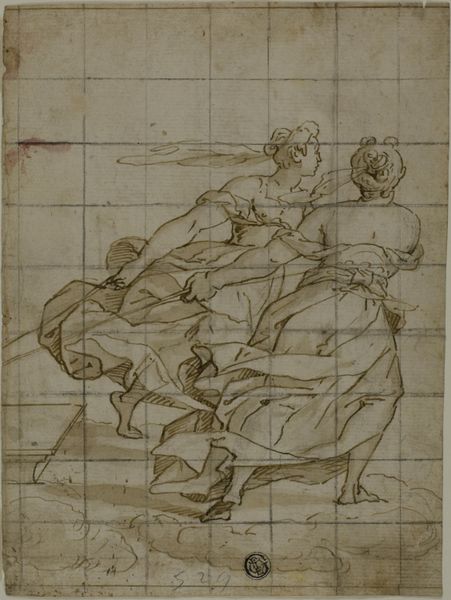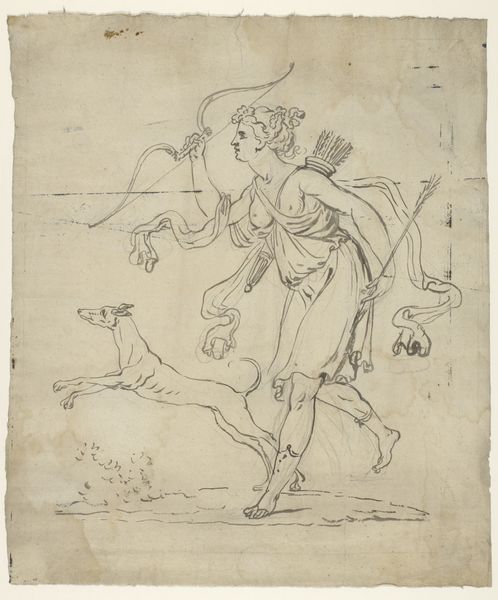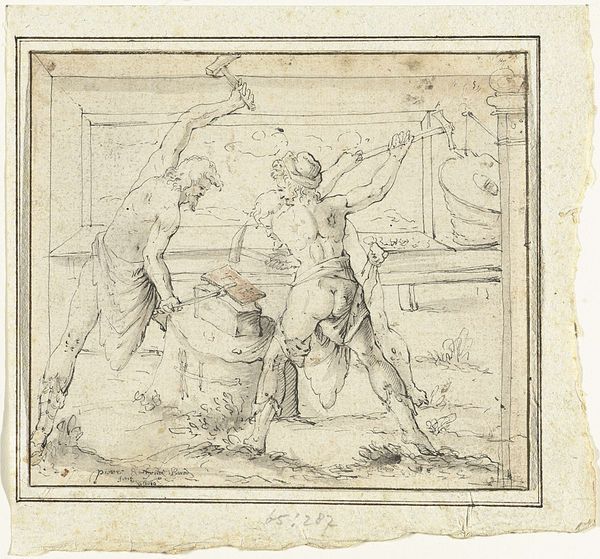
Dimensions: height 580 mm, width 670 mm, height 465 mm, width 470 mm
Copyright: Rijks Museum: Open Domain
Editor: Here we have Abraham van Strij’s "Arcadian Scene with a Woman and a Putto," created sometime between 1763 and 1826. It's a drawing done in pencil and ink on paper, and I find it so graceful and elegant. What do you make of its imagery? Curator: I see echoes of the public fascination with classical antiquity. This piece likely taps into that Neoclassical trend that privileged order and reason. Notice how the "Arcadian" setting is less about a real place and more a symbolic landscape of ideal beauty. What's the effect of that putto on the scene, do you think? Editor: I think it adds a layer of playful innocence, contrasting perhaps with the woman's more statuesque demeanor. But does it also speak to the function of art during this time, perhaps to uplift or instruct? Curator: Precisely! The presence of allegory and classical figures in art aimed to cultivate virtue and inspire civic engagement. Genre painting like this offers viewers a narrative, often tinged with moral or social messages tailored to elite tastes. How do you think the artwork’s lack of vivid coloring affects its social function? Editor: That’s a good question. I suppose it gives it a more serious or intellectual quality, perhaps designed to appeal to an audience accustomed to seeing drawings as preparatory sketches rather than finished works, an art form to be studied closely rather than simply enjoyed? Curator: I agree! Studying art like this drawing provides insight into how art serves societal values, offering lessons from the past which resonate differently in today’s world. It allows us to consider which narratives persisted and, more importantly, for what purpose. Editor: This conversation makes me appreciate the drawing in a new light; it’s far more than just a pretty picture. Curator: Indeed. It reflects and reinforces dominant values of its time. I think I understand Academic Art better now too!
Comments
No comments
Be the first to comment and join the conversation on the ultimate creative platform.
